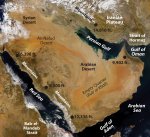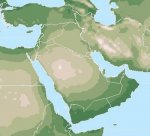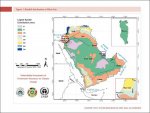biotect
Designer
.
CONTINUED FROM PREVIOUS POST
****************************************
Last but not least, Redwell makes an Infrared Heater that also does double-duty as a kitchen chalkboard -- see http://www.redwellheating.com/home/our-products/chalkboard-heaters.html :


If such a heater is possible, then surely it can't be scalding hot? Otherwise, how could it function as a chalkboard? Wouldn't one wonder about the safety of the child in the photograph?
However, on its "Frequently Asked Questions" webpage, Redwell writes the following in response to the "scalding hot?" question -- see http://www.redwellgb.co.uk/faqs.html :
This is more or less the same thing that Prestyl admits on its website: a 95 degree Celsiius upper limit. And indeed, it one looks at the "fine print" on the Redwell page for its Chalkboard product, the maximum possible surface temperature is listed as 90 degrees Celsius. Surely too hot to write on? And unsafe for a child?
A while back Redwell even produced Far-Infrared Heaters that did double-duty as "white boards". One can only imagine what might have happened to the marker-ink as it was heated up and cooked? Perhaps I am missing something, but 90 degrees Celsius does seem like too hot a temperature for a large, exposed surface in a motorhome, doesn't it? If I seem wrong about this, do let me know, and please post!
****************************************
13. Low-Temperature Far-Infrared Heating Applied in the TerraLiner: a "Hybrid" Solution?
****************************************
In short, a more user-friendly, low-temperature, True Far-Infrared heating film might be an ideal motorhome product, because it would completely eliminate any risk of scalding. Here the ideal temperature would probably be 49 degrees Celsius or below, or 120 degrees Fahrenheit. Because at that temperature one would need to leave one's hand against a heating surface for 8 minutes or more to receive a second-degree burn, and 10 minutes or more to receive a third-degree burn:

Assuming things have been well-designed and there are no panels against which one might fall asleep, the "safety level" (against unwanted burns) should be high enough. See http://www.antiscald.com/prevention/general_info/table.php .
Now suppose in consultation with ILO it turns out that flexible-film, low-temperature, Far-Infrared Heating mats or panels are in fact possible. And suppose we cover the ceiling of the TerraLiner and perhaps also some of the upper bits of the side walls with the stuff. And suppose that, because this will be specifically low-temperature Far-Infrafred film, it does not keep the camper completely warm. Even still, there is no question that such Far-Infrared heating surfaces would completely alter the interior heating dynamic of the TerraLiner, for the better. They might then be combined with more conventional underfloor electric heating, as per Bliss Mobil – again, see http://www.blissmobil.com/en/products-en/20-foot-body-en/interior/279-floor-heating-2.html :

Once more, I am a “both/and” kind of guy, and I see no reason to think that the TerraLiner's heating system must use just one technology. The TerraLiner's driving cab, for instance, might also have a forced-air, Webasto “Air Trop”. But if Far-Infrared Heating could be successfully incorporated into the TerraLiner's design, I strongly suspect that it would have a profound effect on the "end user" experience of heat inside the vehicle. And if all of the above webpages and videos are to be believe, it might also yield substantial energy savings.
****************************************
One final question: I wonder if the 95 degree Celsius operating temperature advertised by Prestyl and Redwell is a constant and “peak-efficiency” operating temperature? Or whether Prestyl's and Redwell's panels could be calibrated with a thermostat such that they never get hotter than 50 degrees Celsius? At that temperature, would such Far-Infrared Heating panels still function effectively? How much efficiency would they lose? Would they still produce the amount and quality of desired Far-Infrared radiation? Would they still be able to “throw” that energy 20 feet, or about 3 m, as claimed in one of IR Heating's videos? Or would the “throw” distance of a temperature-limited panel be seriously compromised?
If anyone reading this has experience with such Far-Infrared panels, and would be able to answer even a few of the questions about Heating raised by the last dozen entries or so, please post!!!
****************************************
For good scientific/historical explanations of the "Theory of Infrared Radiation", and how Infrared Light/Heat was first discovered by William Herschel, see the following two videos:
[video=youtube;AxLbusfRwP8]https://www.youtube.com/watch?v=AxLbusfRwP8 [/video] [video=youtube;XPrVeks2OHI]https://www.youtube.com/watch?v=XPrVeks2OHI [/video]
I found them very interesting, because they show how William Herschel discovered the existence of something that he could not see with his own eyes. Also see https://en.wikipedia.org/wiki/William_Herschel , http://www.nuffieldfoundation.org/p...am-herschel-and-discovery-infra-red-radiation , http://www.ipac.caltech.edu/outreach/Edu/Herschel/backyard.html , and http://coolcosmos.ipac.caltech.edu/cosmic_classroom/classroom_activities/herschel_bio.html .
For an excellent video series about Infrared Heaters (as opposed to Far-Infrared Heaters), see https://www.youtube.com/watch?v=yvkF2seZECA , https://www.youtube.com/watch?v=CjCUqpWmHEA , https://www.youtube.com/watch?v=zejkKX2bVkk , https://www.youtube.com/watch?v=-B5n9Ht5T5M , https://www.youtube.com/watch?v=d3Q2qlUBekI , https://www.youtube.com/watch?v=ypliMGc42hc , and https://www.youtube.com/watch?v=i917LJ_umH8 . This series provides a good survey of the wide variety of Infrared Heaters available, and their various uses. It also owns up to some important basics, for instance, that Infrared heaters (as opposed to Far-Infrared Heaters) are not suitable for use in sleeping and living areas.
****************************************
CONTINUED IN NEXT POST
.
CONTINUED FROM PREVIOUS POST
****************************************
Last but not least, Redwell makes an Infrared Heater that also does double-duty as a kitchen chalkboard -- see http://www.redwellheating.com/home/our-products/chalkboard-heaters.html :


If such a heater is possible, then surely it can't be scalding hot? Otherwise, how could it function as a chalkboard? Wouldn't one wonder about the safety of the child in the photograph?
However, on its "Frequently Asked Questions" webpage, Redwell writes the following in response to the "scalding hot?" question -- see http://www.redwellgb.co.uk/faqs.html :
Do the panels not get really hot?
Surface temperature of a panel can vary from 65 degrees to 95 degrees. Although they can feel hot to touch they will not immediately burn, however they may burn through prolonged contact. Unlike traditional heaters infrared panels are mounted at a higher level making them a safer option.
This is more or less the same thing that Prestyl admits on its website: a 95 degree Celsiius upper limit. And indeed, it one looks at the "fine print" on the Redwell page for its Chalkboard product, the maximum possible surface temperature is listed as 90 degrees Celsius. Surely too hot to write on? And unsafe for a child?
A while back Redwell even produced Far-Infrared Heaters that did double-duty as "white boards". One can only imagine what might have happened to the marker-ink as it was heated up and cooked? Perhaps I am missing something, but 90 degrees Celsius does seem like too hot a temperature for a large, exposed surface in a motorhome, doesn't it? If I seem wrong about this, do let me know, and please post!
****************************************
13. Low-Temperature Far-Infrared Heating Applied in the TerraLiner: a "Hybrid" Solution?
****************************************
In short, a more user-friendly, low-temperature, True Far-Infrared heating film might be an ideal motorhome product, because it would completely eliminate any risk of scalding. Here the ideal temperature would probably be 49 degrees Celsius or below, or 120 degrees Fahrenheit. Because at that temperature one would need to leave one's hand against a heating surface for 8 minutes or more to receive a second-degree burn, and 10 minutes or more to receive a third-degree burn:

Assuming things have been well-designed and there are no panels against which one might fall asleep, the "safety level" (against unwanted burns) should be high enough. See http://www.antiscald.com/prevention/general_info/table.php .
Now suppose in consultation with ILO it turns out that flexible-film, low-temperature, Far-Infrared Heating mats or panels are in fact possible. And suppose we cover the ceiling of the TerraLiner and perhaps also some of the upper bits of the side walls with the stuff. And suppose that, because this will be specifically low-temperature Far-Infrafred film, it does not keep the camper completely warm. Even still, there is no question that such Far-Infrared heating surfaces would completely alter the interior heating dynamic of the TerraLiner, for the better. They might then be combined with more conventional underfloor electric heating, as per Bliss Mobil – again, see http://www.blissmobil.com/en/products-en/20-foot-body-en/interior/279-floor-heating-2.html :

Once more, I am a “both/and” kind of guy, and I see no reason to think that the TerraLiner's heating system must use just one technology. The TerraLiner's driving cab, for instance, might also have a forced-air, Webasto “Air Trop”. But if Far-Infrared Heating could be successfully incorporated into the TerraLiner's design, I strongly suspect that it would have a profound effect on the "end user" experience of heat inside the vehicle. And if all of the above webpages and videos are to be believe, it might also yield substantial energy savings.
****************************************
One final question: I wonder if the 95 degree Celsius operating temperature advertised by Prestyl and Redwell is a constant and “peak-efficiency” operating temperature? Or whether Prestyl's and Redwell's panels could be calibrated with a thermostat such that they never get hotter than 50 degrees Celsius? At that temperature, would such Far-Infrared Heating panels still function effectively? How much efficiency would they lose? Would they still produce the amount and quality of desired Far-Infrared radiation? Would they still be able to “throw” that energy 20 feet, or about 3 m, as claimed in one of IR Heating's videos? Or would the “throw” distance of a temperature-limited panel be seriously compromised?
If anyone reading this has experience with such Far-Infrared panels, and would be able to answer even a few of the questions about Heating raised by the last dozen entries or so, please post!!!
****************************************
For good scientific/historical explanations of the "Theory of Infrared Radiation", and how Infrared Light/Heat was first discovered by William Herschel, see the following two videos:
[video=youtube;AxLbusfRwP8]https://www.youtube.com/watch?v=AxLbusfRwP8 [/video] [video=youtube;XPrVeks2OHI]https://www.youtube.com/watch?v=XPrVeks2OHI [/video]
I found them very interesting, because they show how William Herschel discovered the existence of something that he could not see with his own eyes. Also see https://en.wikipedia.org/wiki/William_Herschel , http://www.nuffieldfoundation.org/p...am-herschel-and-discovery-infra-red-radiation , http://www.ipac.caltech.edu/outreach/Edu/Herschel/backyard.html , and http://coolcosmos.ipac.caltech.edu/cosmic_classroom/classroom_activities/herschel_bio.html .
For an excellent video series about Infrared Heaters (as opposed to Far-Infrared Heaters), see https://www.youtube.com/watch?v=yvkF2seZECA , https://www.youtube.com/watch?v=CjCUqpWmHEA , https://www.youtube.com/watch?v=zejkKX2bVkk , https://www.youtube.com/watch?v=-B5n9Ht5T5M , https://www.youtube.com/watch?v=d3Q2qlUBekI , https://www.youtube.com/watch?v=ypliMGc42hc , and https://www.youtube.com/watch?v=i917LJ_umH8 . This series provides a good survey of the wide variety of Infrared Heaters available, and their various uses. It also owns up to some important basics, for instance, that Infrared heaters (as opposed to Far-Infrared Heaters) are not suitable for use in sleeping and living areas.
****************************************
CONTINUED IN NEXT POST
.
Last edited:

















































